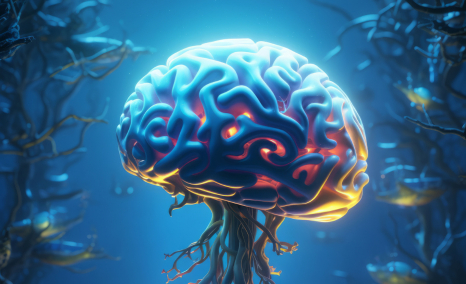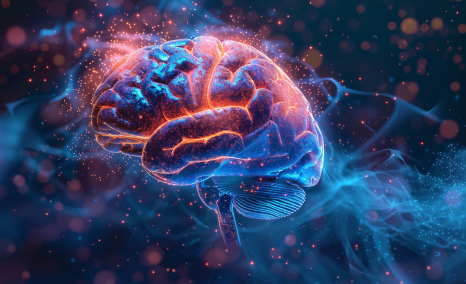Having a strong immune system, flourished with properly working immune cells is the ultimate key to surviving a healthy life. However, what if a person is in possession of overactive immune cells? It leads to improper functioning of the immune system, confusing internal organs as foreign invaders thus attacking them in the process. The condition is known as Hemophagocytic lymphohistiocytosis (HLH).
HLH is a frequently fatal, rare disease caused by an overactive, abnormal response of the immune cells. As per John Hopkins Medicine, there are two types of HLH, familial and acquired. Familial forms of HLH (FHL) are due to the mutations or changes in the genetic makeup that leads to impaired function of the immune system and can be seen in adolescents and adults. Familial HLH accounts for about 25% of cases. Whereas Acquired forms of HLH are encountered in association with (usually) viral infections, autoinflammatory/autoimmune diseases, malignant diseases, and acquired immune deficiency states (e.g., after organ transplantation). According to the NORD, in adults, men are slightly more affected than females. As per DelveInsight’s HLH epidemiological estimates, the total HLH incident population in 7MM (the US, EU5 (the UK, Germany, France, Spain and Italy), and Japan) was 4,435 in 2017 with the US accounting for approximately 415 cases (100 familial and 315 acquired). Furthermore, the analysis projects towards an increasing trend of HLH incidence in the upcoming ten years.
However, the exact incidence and prevalence are unknown as rare disorders often go misdiagnosed or undiagnosed. It is an underdiagnosed condition that involves the final common pathway of hypercytokinemia leading to end-organ damage and ultimately death. The symptoms vary considerably with person to person. However, the common hallmark in the involvement of multiple organs. Generally, the initial symptoms of the affected individuals range from fevers, rashes, an abnormally large liver (hepatomegaly), to an abnormally large spleen (splenomegaly), which are quite non-specific. These often coincide with other disorders and conditions making it difficult to timely as well as accurately diagnose. Thus, the diagnosis is based upon the identification of characteristic symptoms, a detailed patient history, a thorough clinical evaluation, and a variety of specialized tests.
Therefore, the Hemophagocytic lymphohistiocytosis treatment revolves around specific symptoms including the severity of symptoms, the age of onset, and the underlying cause of the condition that are specific to affected individuals. However, early diagnosis and treatment can cut any ice in case of HLH as, without prompt treatment, the condition is often fatal. The HLH treatment targets the underlying disorder and controls the immune dysregulation. Etoposide, dexamethasone, and ultimately HSCT are the mainstay for the majority of patients with HLH.
Etoposide works by inhibiting topoisomerase II, leading to double-stranded DNA breaks. It was first tested in 1980, and has subsequently been tested in large studies and is considered standard of care. For familial cases, Allogeneic hematopoietic cell transplantation is often recommended as a cure. (Fischer et al. (1986)). Before hematopoietic cell transplantation, people with HLH are usually treated with chemotherapy and/or immunotherapy to destroy excess immune cells which can lead to life-threatening inflammation. In patients who are ineligible to undergo transplantation, Alemtuzumab, a monoclonal antibody to CD52 that destroys mature lymphocytes, can be used. In cases of relapse or recurrent HLH, the patient is administered maintenance therapy with dexamethasone pulses, cyclosporine daily, and etoposide to the point the patient is eligible to undergo stem cell transplant.
Researchers are evaluating several novel drug candidates in monotherapies as well as in combinations for Hemophagocytic lymphohistiocytosis treatment. Several drugs, including alemtuzumab, infliximab, anakinra, ruxolitinib, and other medications have shown promise as salvage therapy. Salvage therapy is drug or drug combination therapy that is used when the standard or preferred drug therapies have not been effective. However, to determine the long-term safety and efficacy of these drugs more research is underway.
The Hemophagocytic lymphohistiocytosis treatment market lacks the availability of standard treatment along with the challenge of underdiagnosis. Further, inadequate disease awareness adds to the roadblocks in market size growth. DelveInsight’s market analysis estimates that even in the coming decade the market outlook does not seem to be much promising owing to the stagnant pipeline. As per DelveInsight’s HLH treatment market analysis, Tadekinig alfa, a candidate of A2B Bio, is the only emerging therapy that is awaiting launch. Thus, there is a need for more clinical trials for the development of successful treatments to lessen down the burden and decrease the death toll.









-Agonist.png)


